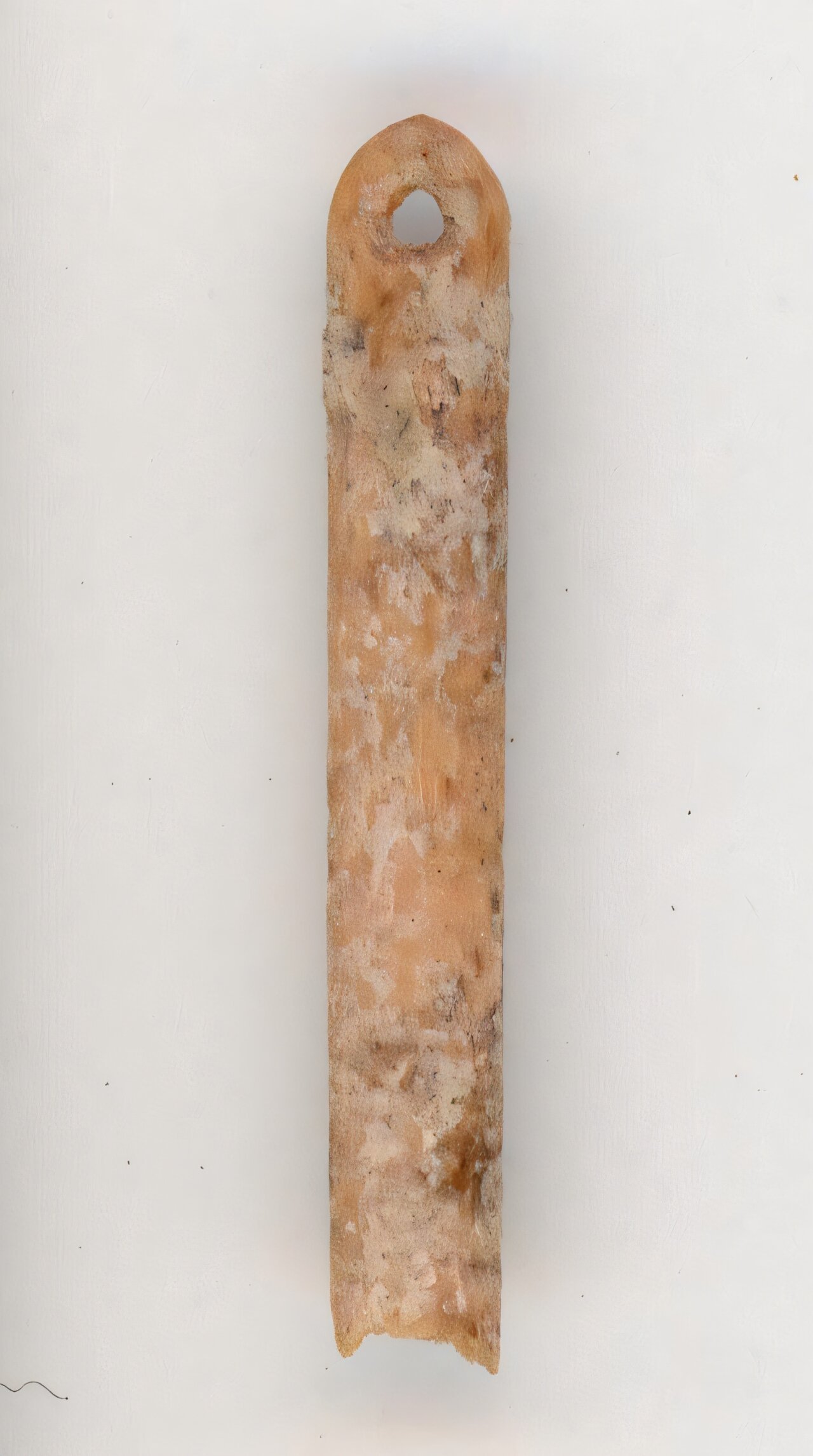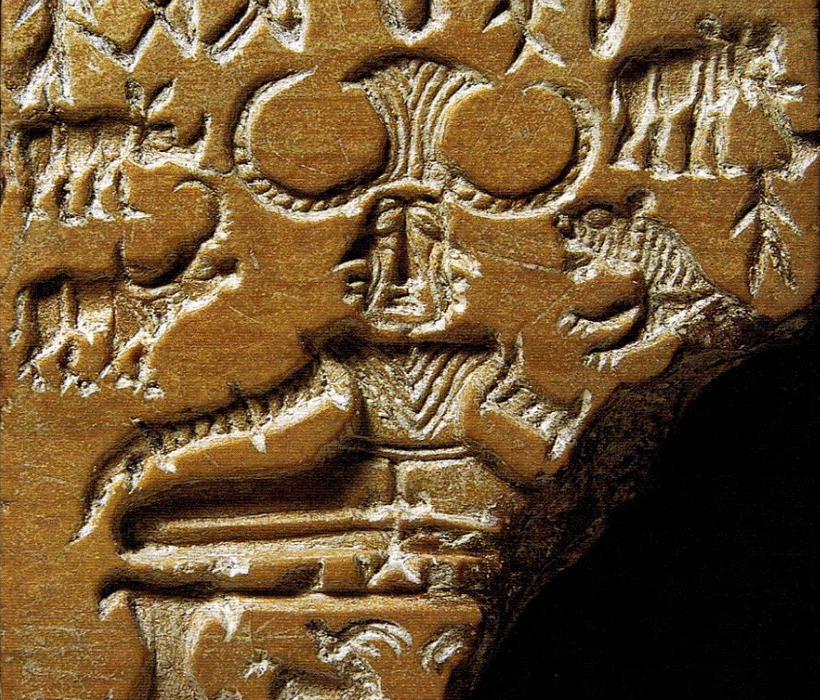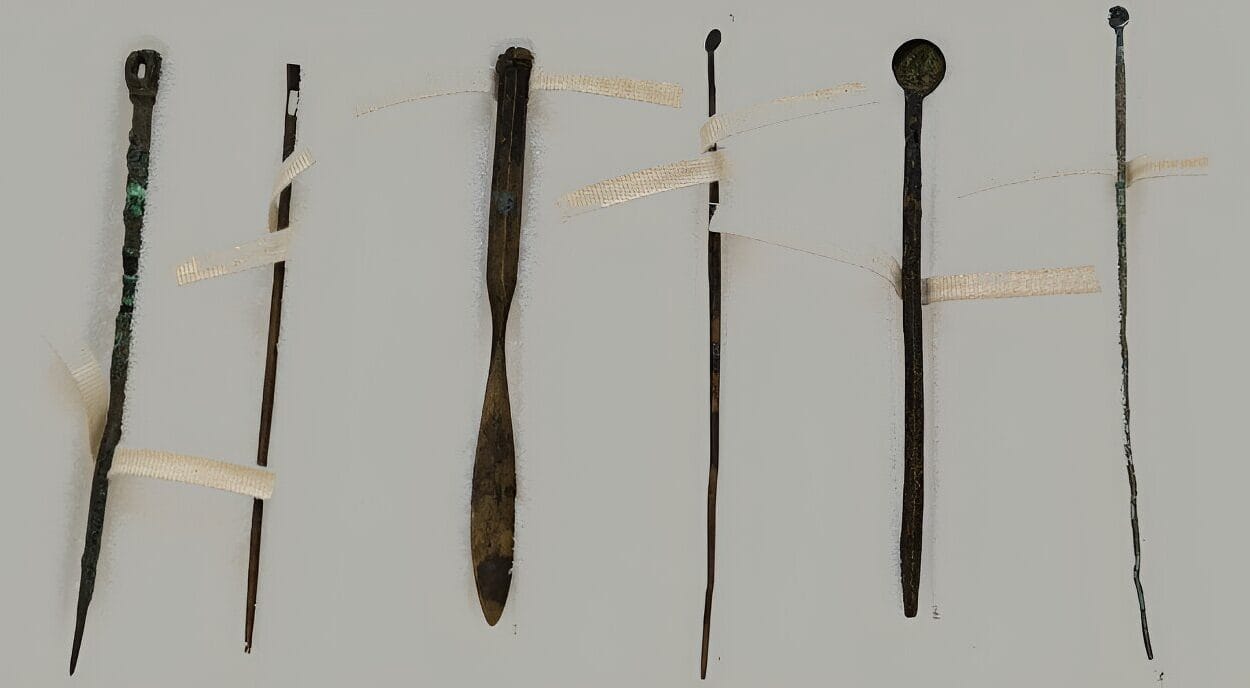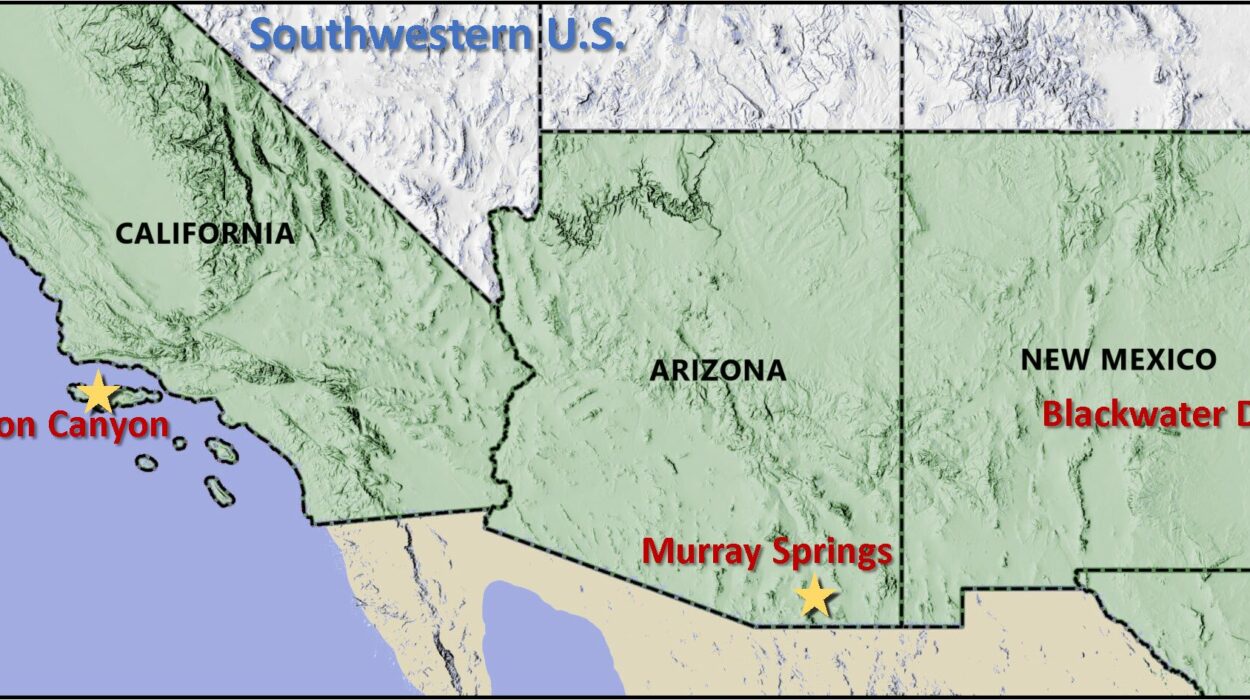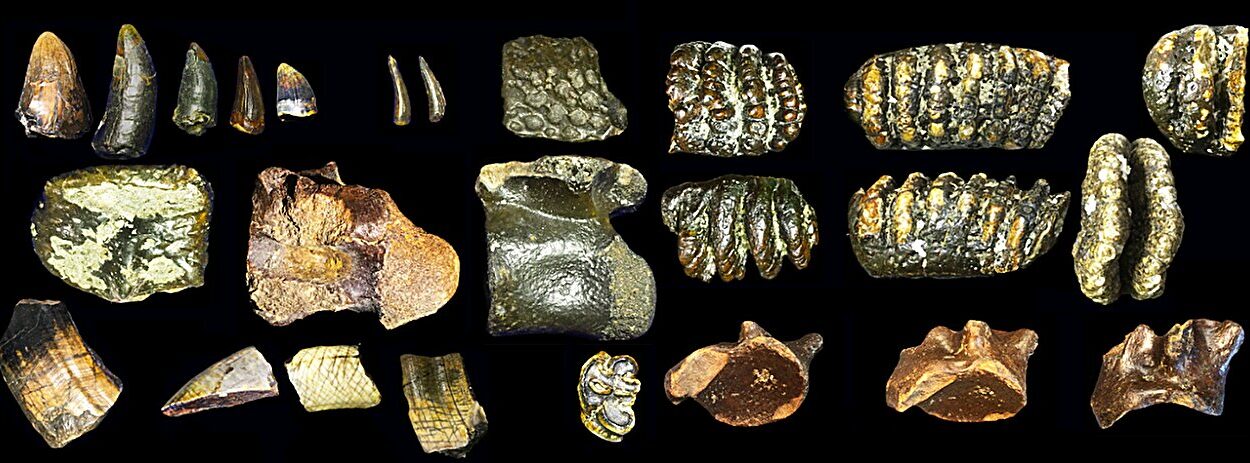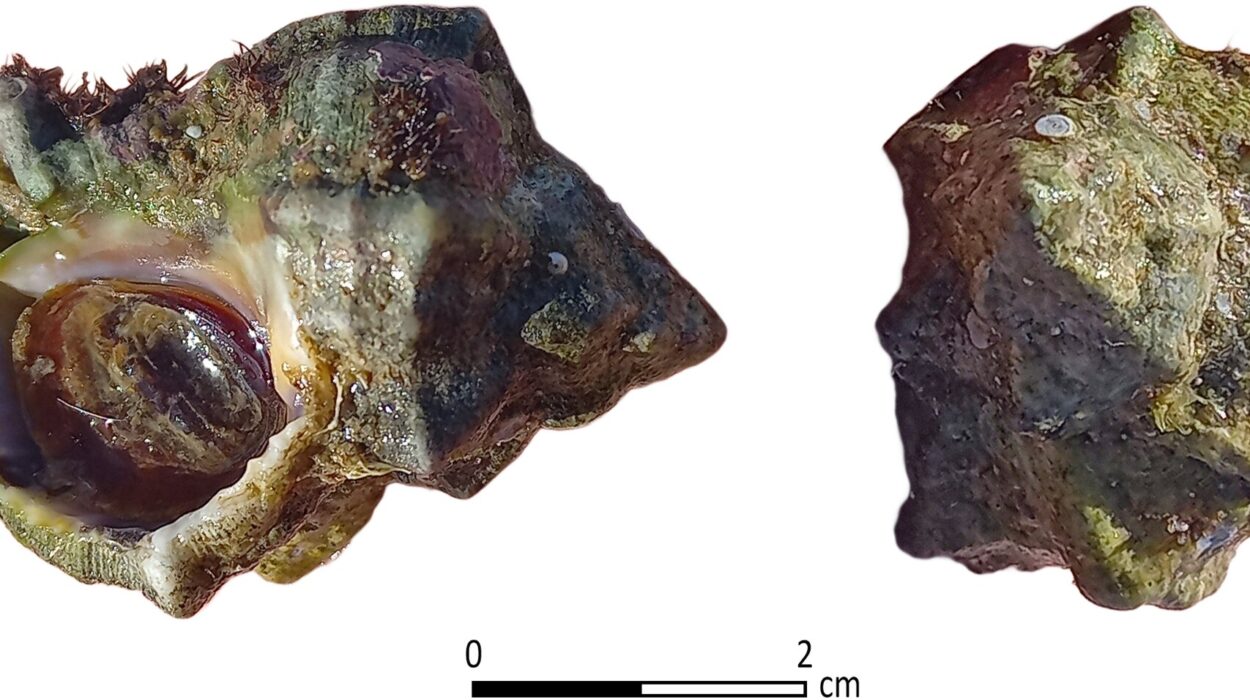In the arid, windswept plains of Wyoming, an archaeological site is helping to rewrite the early history of human life in North America. Nearly 13,000 years ago, a group of Paleolithic humans came into contact with a massive Columbian mammoth, either by hunting it or scavenging its remains. The LaPrele site, located in Converse County, is a treasure trove of evidence that illuminates not just the mammoth’s demise, but the ingenuity and resourcefulness of the first humans to populate the Americas.
The findings at this site have now taken a significant leap forward, revealing a remarkable discovery that expands our understanding of these early foragers: they were crafting sophisticated tools like bone needles from the bones of fur-bearing animals—including foxes, hares, and even larger predators like bobcats, mountain lions, lynx, and possibly the now-extinct American cheetah. This innovation speaks volumes about their adaptation to a harsh, cold climate, where clothing made from animal pelts was not merely a luxury, but a survival necessity.
The LaPrele Mammoth Site: A Window into Ancient Life
The LaPrele site has long been a focal point for researchers eager to learn more about the people who lived in North America during the Late Pleistocene, a period when humans first spread across the continent. At the heart of the site lies the remains of a sub-adult mammoth—either killed or scavenged by these early foragers—along with evidence of a camp used during the butchering process. But what makes this discovery particularly significant is that it’s not just about the mammoth; it’s about the people who interacted with it, and the tools they used to make a living in a world full of challenges.
In addition to the mammoth remains, archaeologists led by Wyoming State Archaeologist Spencer Pelton, along with collaborators from the University of Wyoming and other institutions, discovered a variety of artifacts. Most notably, a bone bead made from a hare’s bone was unearthed. This bead is particularly significant as it is now recognized as the oldest known bead in the Americas—offering a tantalizing glimpse into the artistic and symbolic practices of early humans.
What adds another layer of intrigue to the LaPrele site is the discovery of bone needles, which were likely used to stitch together garments made from the pelts of the aforementioned fur-bearing animals. This, in itself, represents a groundbreaking step forward in understanding how early humans adapted to their environment.
Bone Needles and the Role of Fur-Bearing Animals
The LaPrele site’s bone needles provide some of the most compelling evidence to date of early humans’ ability to create tailored garments. The presence of needles made from the bones of red foxes, bobcats, mountain lions, lynx, and hares suggests that these animals were not merely hunted for food but were specifically targeted for their fur—likely to fashion clothing that helped these humans endure the cold, particularly as they ventured into northern latitudes.
The significance of these findings lies in the fact that such bone needles were not previously identified with such specificity. The study published in PLOS ONE marks the first-ever identification of the animal species used to create these needles, shedding light on the materials early humans used to produce their clothing. The analysis utilized cutting-edge technology, including zooarchaeology by mass spectrometry (ZooMS) and Micro-CT scanning, to identify the peptides in the bones. By comparing these peptides with those of known species from the Early Paleoindian period, the researchers were able to pinpoint which animals’ bones were being utilized.
The study concluded that the bones used to make the needles at the LaPrele site belonged to a variety of fur-bearing mammals, animals that would have been highly prized for their pelts. This discovery is significant not only because it sheds light on the practical tools and garments of these early people, but because it provides evidence of a cultural innovation—the use of bone needles in garment production—that was crucial for the survival and expansion of human populations into colder, northern regions of the continent.
The Significance of Tailored Garments in Early Human Expansion
Why is the discovery of bone needles so important? It goes beyond simply understanding how early humans created clothes—it provides key insight into how they managed to thrive in environments that would have been hostile to people who were ill-prepared. During the Early Paleoindian period, the climate was cooler, and the ability to make warm, durable clothing was crucial for survival.
According to the researchers, the ability to fashion tailored garments using bone needles and fur-bearing animal pelts allowed humans to expand their range into areas that had previously been too cold or inhospitable. This is significant because it shows that early humans didn’t just survive—they adapted, innovated, and thrived, using their environment in ways that were both practical and creative. Their capacity to make garments that provided warmth was a key factor in the eventual colonization of the Americas.
“Once equipped with such garments, modern humans had the capacity to expand their range to places from which they were previously excluded due to the threat of hypothermia or death from exposure,” said Pelton and his colleagues. This ability to overcome environmental challenges laid the groundwork for the eventual spread of human populations across the continent and even into the harsh climates of the northern latitudes.
The Role of Trapping in the Paleoindian Economy
Another intriguing aspect of the LaPrele site findings is the possibility that trapping played a significant role in how the Paleoindians obtained the animals used for their fur. Pelton and his colleagues suggest that these fur-bearing animals were likely acquired through trapping, not primarily as a food source. This is an important distinction because it suggests that early humans had a sophisticated understanding of animal behavior and were not just focused on hunting for sustenance.
“Foragers use animal products for a wide range of purposes other than subsistence,” the researchers noted. The mere presence of animal bones at an archaeological site does not necessarily indicate that those animals were eaten. In this case, the bones of foxes, bobcats, and other predators were likely collected for their valuable pelts, which were used to create tailored garments—further underscoring the complexity of the Paleoindian economy and the advanced skills that these early humans had developed.
The researchers conclude that direct access to fur-bearing predators, obtained possibly through trapping, is one of the most detailed pieces of evidence yet discovered that illustrates how early North American populations created and used garments. This suggests that the Early Paleoindians had mastered not just basic survival, but also the crafting of specialized tools and clothing that enabled them to thrive in a challenging environment.
The Broader Implications of the Discovery
The LaPrele site’s discoveries are more than just a fascinating glimpse into the past; they provide a crucial piece of the puzzle that helps explain how early humans managed to spread across the Americas. As one of the earliest known sites in North America, the LaPrele excavation holds critical evidence for understanding human migration, cultural evolution, and technological advancements during the Paleoindian period.
This discovery not only changes our perception of how people in prehistoric times adapted to their environment, but it also speaks to the deep, long-standing relationship humans have had with the animals around them. From creating tools to crafting clothing, early humans found ways to use the natural world to their advantage in ways that were resourceful, sustainable, and incredibly sophisticated.
For archaeologists like Spencer Pelton and his colleagues, the LaPrele site offers a glimpse into a world that existed long before written history. And with every new discovery, we inch closer to understanding the daily lives of the first people who inhabited the vast and varied landscapes of North America, surviving and thriving in a time when the world was a much different place than it is today.
As more research is conducted and more sites like LaPrele are explored, the incredible ingenuity of these early humans will continue to reveal itself, shedding light on the complex ways in which humans adapted to their surroundings, created tools and garments, and ultimately laid the foundation for the civilizations that followed.
Reference: Early Paleoindian use of canids, felids, and hares for bone needle production at the La Prele site, Wyoming, USA, PLOS ONE (2024). DOI: 10.1371/journal.pone.0313610
